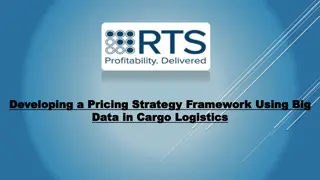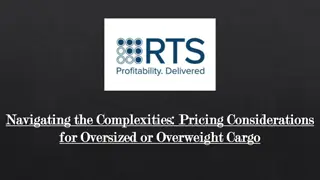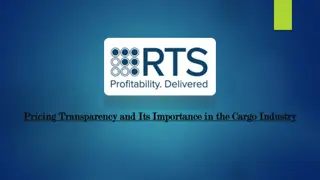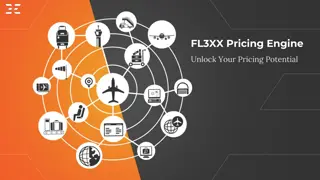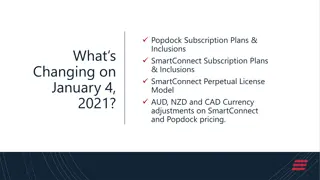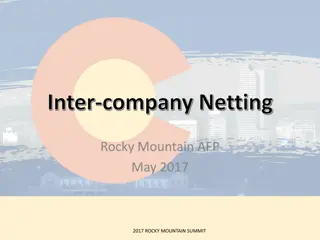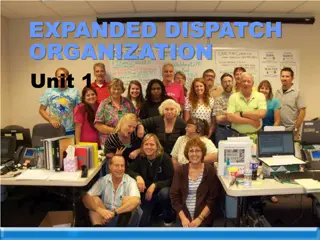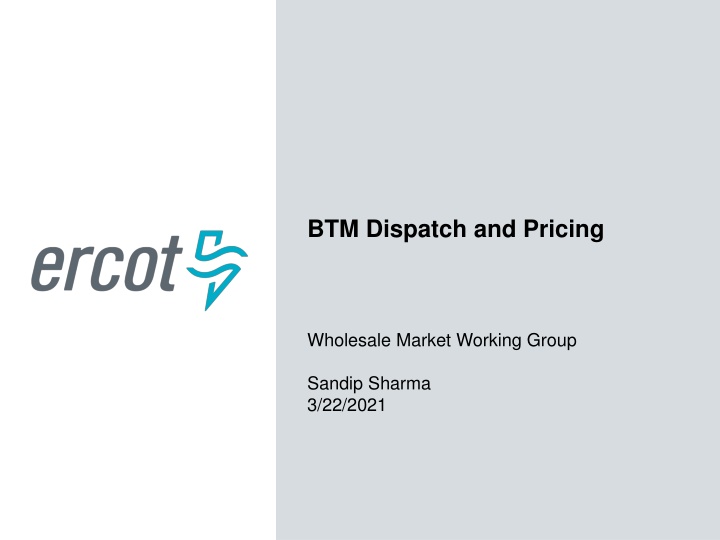
BTM Dispatch and Pricing Wholesale Market Working Group Summary
Explore scenarios discussing netting in operations and settlement within the wholesale market working group for BTM Dispatch and Pricing. Analyze the impacts of self-dispatch incentives and inefficiencies in the current rules, with detailed examples and implications for market participants.
Download Presentation

Please find below an Image/Link to download the presentation.
The content on the website is provided AS IS for your information and personal use only. It may not be sold, licensed, or shared on other websites without obtaining consent from the author. If you encounter any issues during the download, it is possible that the publisher has removed the file from their server.
You are allowed to download the files provided on this website for personal or commercial use, subject to the condition that they are used lawfully. All files are the property of their respective owners.
The content on the website is provided AS IS for your information and personal use only. It may not be sold, licensed, or shared on other websites without obtaining consent from the author.
E N D
Presentation Transcript
BTM Dispatch and Pricing Wholesale Market Working Group Sandip Sharma 3/22/2021
Example Description EPS Meter (POI) L1 G1 G1 Gross HSL = 10 MW G1 Gross LSL = 0 MW G1 Cost/Offer = $30/MWh L1 = 30 MW (flat) L1 is operationally independent of G1, but in same QSE Current Rules Registration as a PUN is not required to allow for netting of BTM Gen and Load Netting is applicable in Operations and in Settlement Load that is netted against BTM gen is not ERCOT Load in Operations or in Settlement Net Gen @ POI settled at the nodal price; Net Load @ POI settled at the load zone price G1 is self-dispatched up to the quantity of BTM Load G1 is ERCOT-dispatched for quantities exceeding BTM Load 2 PUBLIC
Scenario 1 Netting In Operations and Settlement (Current Rules) No Netting In Operations, but Netted in Settlement (Not Current Rules) Load = 30 MW Load = 30 MW Gen output = 0 MW Gen output = 10 MW RN = $10 LZ = $75 RN = $10 LZ = $75 Incentive to self-dispatch G1 to 10 MW Inefficient self-dispatch of G1 relative to its cost/offer ($30) and the nodal price ($10) due to G1 effectively settling at LZ price ($75) up to L1 MW No self-dispatch of G1 G1 is efficiently dispatched at 0 MW by ERCOT relative to its cost/offer ($30) and the nodal price ($10) ERCOT Dispatch and Settlement of G1/L1 are not aligned G1 incentive is to produce 10 MW, which is inconsistent with its cost/offer ($30) relative to the nodal price ($10) and inconsistent with its Basepoint of 0 MW 3 PUBLIC
Scenario 2 Netting In Operations and Settlement (Current Rules) No Netting In Operations, but Netted in Settlement (Not Current Rules) Load = 30 MW Load = 30 MW Gen output = 0MW Gen output = 10 MW RN = $75 RN = $75 LZ = $10 LZ = $10 Incentive to self-dispatch G1 to 0 MW Inefficient self-dispatch of G1 relative to its cost/offer ($30) and the nodal price ($75) due to G1 effectively settling at LZ price ($10) up to L1 MW No self-dispatch of G1 G1 is efficiently dispatched at 10 MW by ERCOT relative to its cost/offer ($30) and the nodal price ($75) ERCOT Dispatch and Settlement of G1/L1 are not aligned G1 incentive is to produce 0 MW, which is inconsistent with its cost/offer ($30) relative to the nodal price ($75) and inconsistent with its Basepoint of 100 MW 4 PUBLIC
ERCOT Load Differences Gen output = 100MW Load = 100MW ERCOT RT Load is equal to the sum of telemetered Generation Resource Net MW minus DC Tie Flows (where + = DC Export; - = DC Import) In the case of Netting in Operations and Settlement (Current Rules) the example above will contribute 0 MW to ERCOT RT Load and 0 MW to ERCOT Settlement Load In the case of No Netting in Operations, but Netted in Settlement (Not Current Rules), the example above will contribute 100 MW to ERCOT RT Load and 0 MW to ERCOT Settlement Load 5 PUBLIC






